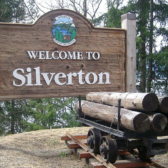Spring high water information as the melt water levels continue to rise
With spring melt waters rising the danger of flooding is increasing in some areas of the West Kootenay.
With an above average to high snow pack this year in the region, there is an increasing possibility of spring flooding. The Regional District of Central Kootenay is urging people to take time now to become better informed and prepared.
People are asked to: know the risks specific to your community; develop a family emergency plan and practice it; and prepare an emergency kit for home and vehicle.
In the event of a flood, property owners are responsible for protecting their land and property. To assist those property owners in potential flood areas, designated fire stations throughout the regional district have sandbags only available for emergency use.
“If you have experienced high water encroaching your property in the past, you may expect that again this year,” said emergency coordinator Noreen Clayton in a press release.
The amount of snow in the higher altitudes in the Kootenay mountains is the second highest in 30 years, sitting at around 142 per cent of normal — the most accumulated snow at this time since 1991, according to the RDCK.
And there was even more snowfall last month due to cooler weather in the mountains, delaying the spring melt by three weeks.
In Nelson, the city’s major creeks — Anderson and Cottonwood — should not be in any danger of flooding. The major cause for water overrunning the banks in those areas is accumulated debris.
However, City crews have been monitoring the situation on those creeks, clearing some debris, since the snow melted in the city in early April.
Flooding a concern elsewhere
The Cariboo Regional District in the B.C. Interior declared a local state of emergency after the Cottonwood River reached high levels Thursday.
Several other B.C. regions are beginning to see the effects of recent heavy rains, warmer temperatures and snowpacks that are up to 140 per cent above normal.
The Rivers Forecast Centre has issued a high stream flow advisory for low-lying areas of the Salmon River near Falkland, 44 kilometres northwest of Vernon.
Elsewhere, minor flooding has been reported along Priest Creek in Kelowna’s southeast corner and McDougall Creek in West Kelowna.
For more information
- For personal and family preparedness including details on proper sandbagging techniques, visit the Provincial Emergency Program web site www.pep.bc.ca .
- For Kootenay Lake Levels, visit http://www.fortisbc.com/Electricity/CustomerService/KootenayLakeLevels.
- For river levels http://bcrfc.env.gov.bc.ca/warnings.
- For RDCK public notices please go to http://www.rdck.bc.ca/publicinfo/notices.html.
- Flood precautions: excerpts from the Provincial Emergency Program website
- www.pep.bc.ca.
Emergency contacts
- To report a flooding emergency, call 1-800-663-3456
Emergency coordinators
- Alanna Garrett, (250) 428-0299
- Noreen Clayton, (250) 352-8177
- Terry Warren, (250) 265-0230
Before a flood
- Prepare a personal emergency kit for each family member including pets (plan for at least a three-day supply of water, food, medication, clothing, eye glasses etc).
- Store important papers, valuables and family mementos in water tight containers.
- Keep a digital file of important documents and photos of house and property for insurance purposes (jump drive that you can take with you).
- Be prepared to leave your home quickly.
Keeping an eye on the freshet (flood water)
- Watch for warning signs: increase in height and intensity of water flows, mudslides, debris in creeks, colour changes in water or leaning trees.
- Banks of rivers and streams may be unstable and dangerous (undercut).
- Consider alternate arrangements for your pets and livestock.
- Check on elderly or disabled neighbours to make sure they are aware.
- Check local media for information.
If rising waters threaten your property
- Bring in outdoor furniture
- Move essential items and hazardous materials such as cleaners and pesticides to an upper floor or away from the area
- Turn off utilities at the main switches or valves
- Unplug electrical items
- Prepare for the possibility to evacuate
If you must evacuate
- Follow the instructions of local emergency officials
- Take your personal emergency kit and all important papers and documents with you.
- Ensure each family member has waterproof coat and footwear.
- Lock all doors and windows, double check that electricity, water and natural gas are shut off
- Take extra care when driving, familiar roads look different when flooded.
- Do not walk through moving water – less than 15 cm (six inches) is enough to make you fall, go where the water is not moving and watch for tripping hazards.
- Do not drive into flooded areas – you and your vehicle can be quickly swept away.
- In the event of an evacuation, make sure you register at the ESS Reception Centre (evacuation centre) so we can account for all evacuees.
- Check with local authorities for the “All Clear” before you return home; safety inspections may need to be completed.
Source: RDCK


























